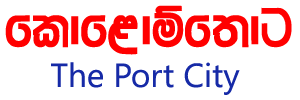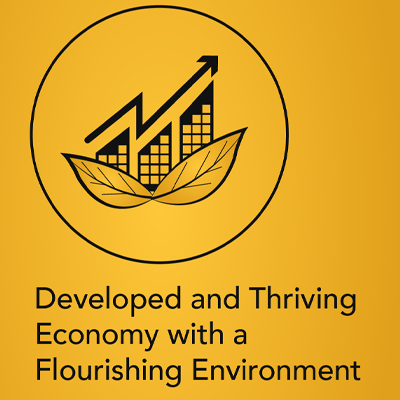A lot can happen in a century. In the 1920s the world was just celebrating the release of the new tetanus vaccine, and reeling from the aftershock of World War One, completely unaware that they would soon plunge into a second. Governments were different. Technology was different. Life itself was different. Yet in 2020 there we were, celebrating the release of a new vaccine, and reeling from the aftershocks of a worldwide catastrophe, unaware that we would soon plunge into a second wave. The point is, a hundred years is a long time. Even for a country with roots as ancient and rich as Sri Lanka. While a lot can change, an equal amount can just about stay exactly the same. Especially in the field of politics. So the 36,500 day question is: can we change in just the right ways, to transform a country into a utopia in 100 years? Possible or not, there’s only one way to find out, and that’s what the vision of the Centenary Foundation aims to do. By reinventing the old and changing the way leaders think.
“We, as a generation, inherited a country embroiled in violent conflict and devastated by corruption. Even though we may not have had control over what we inherited, we have a responsibility and privilege to serve the generations to come.” These were the words of Prashan De Visser, Co-Founder, and voice of the Centenary Movement, though it is not a lone one. In 2018, a small group of wide-eyed professionals from varying fields and backgrounds, noticed the alarming state the country was in and decided to do something about it. So they strategised, analysed, devised and structured out a long term, innovative plan: a movement that would lead the country to live up to some, if not all, of its potential. And this plan, true to its movement’s name, has a deadline. “When Sri Lanka celebrates her 100th independence anniversary in 2048, we hope that our nation will have experienced a transformation in its socio-political and economic landscape.” This sentiment between a group of dreamers quickly spread, amassing a group of over 500 applicants, 200 volunteers, 300 student applicants, 50 diverse core team members, a 9 member board of directors from various backgrounds, genders and ethnicities, a board of advisors, and soon, 25 district coordinators for grassroot advocacy and organisation. So forth went the mission to change the country. And the vector for this explosion, was education. nurturing a wave of visionaries with a new, more sustainable formula of politics and leadership that truly understands and embraces the job of running and improving the country. That formula can be boiled down into the three pillars of the Centenary Movement. As a writer, simply serving as a narrator for this story, I think it’s best for these pillars to be elaborated by the co-founder himself.
“If the vision we have for our nation Centenary is to be realised, we need”:
Character
Leaders who have a deep commitment to upholding integrity, have strong value systems and principles, and are committed to transparency, accountability and results.
We have suffered under leaders who are corrupt, self-serving, violent and not acceptable to the people they serve. Sri Lanka cannot afford such leaders to continue to be the norm. Hence, these values that depict strong character are a key pillar of the leader we seek to develop.
Clarity
Anchored by a clarity of vision and strategy, along with clarity on their role and proactively engaged in achieving that end.
Sri Lanka needs leaders who have a clear vision for our future. For far too long we have had opportunistic leaders who have betrayed sound policies for short term political gain. Therefore, we need leaders who are committed to a clear vision and set up strong national policies that will go beyond their political interest and place the national interest.
Compassion
Aware of the pain, grievances and aspirations of the common man and moved with compassion to action, rather than paying lip service to exploit the suffering for political mileage.
Many of our political leaders have lived lives of privilege and affluence, and they can no longer relate to the common man and their pain. We need leaders of compassion, who understand the suffering and the yearning of the people they serve, in place of those who dismiss the grievances or betray the aspirations of the people they serve.
As such, it is important in the movement’s eyes to, above all, preserve the humanity present within a leader, and let that be both a driving force and a reminder for why they lead at all.
Of course, its values only make up half the movement. The Centenary’s vector, as mentioned before, is education. Which is where the Centenary Academy comes in. It’s the movement’s chance to take their values, and let them assimilate into the minds and visions of a generation unclouded by prejudice or hesitation, aching for change. When asked why put so much faith in education, De Visser had this to say: “We believe that young people can change a country’s trajectory. More importantly, they want to.” And so, it’s the Centenary Academy’s goal to guide those with an aspiration for politics to understand the power of change and the responsibility they must undertake to wield it, and attempt to equip them with the right tools to move forward.
The curriculum is a one year programme, running exclusively from February 2021 to February 2022, that has already enrolled over 300 students, encompassing every single district in the country. Diversity is very important. The academy fuses their core values with over 700 hours of lectures in 6 vastly different modules: Economics, Politics and Governance, Health and Wellbeing, Environment and Agriculture, Diversity and Inclusion, and Education Reform. These studying sessions take place over the weekends and span over 6 hours, with field work incorporated on the final weekend of each month.
Reinforcing a few key principles, the academy aims to turn diversity into strength. The first key is interaction. Or rather, collaboration. The Academy’s rich educational experience offers students the opportunity to learn vastly different aspects of positive growth that are interconnected with the same core. These different streams converge during residential training and begin to merge in field work sessions. Rather than pursuing a singular path, the academy encourages an environment where students, experts and professors put all their ideas forward and share them in a melting pot of perspectives and creativity. “We have chosen policy areas that are critical to a nation’s future as well as to the uplifting of its citizens. The policy areas of the movement are wide and varied, and also address some of the most critical issues in the country today.” But the learning doesn’t stop once the course finishes. At the end of the year, the academy provides each student with a mentor from their respective field, to guide them through the courses for a 3-month period and offer perspective and advice, allowing students to view their fields through the eyes of an expert. This bond and helping hand stretch past the course’s duration, and encourage students to look beyond the academy, and into their future; to think forward.
Thus far the Centenary Movement has set up some pretty lofty challenges for itself. But, their ultimate goal is accomplishing their policies. These are 10 gargantuan milestones that, if completed, would help Sri Lanka attain the status of a fundamentally ideal country. They are as follows:
- A true meritocracy where ethnicity, gender or religion no longer plays a discriminatory role.
- A safe, equitable and just nation for women.
- Low levels of corruption.
- A developed and thriving economy.
- Recognised as a model for social, political and economic transformation.
- Zero levels of poverty.
- Internationally recognised for high standards in education and health care.
- Recognised for innovation and technology.
- A generous nation able to provide aid and support to other nations in need.
- An inclusive Sri Lankan identity within a peaceful and just society.
2048 is a fairly steep deadline. But this doesn’t mean accomplishing everything in one fell swoop. The movement has its priorities split up into a 5, 10 and 25 year plan, based on urgency. “In the next 5 years we would aim to have an effective and well-run academy that produces 250 students of character… who engage as national level leaders in the political, economic and social landscape of Sri Lanka,” says De Visser. So, things are happening a few steps at a time. Again, if time has shown the human race anything recently, it’s that any catalyst big and determined enough, can change the world in no time at all. And with a new era of leaders, that catalyst seems to be soon approaching.
If this article has spurred any sort of belief in that cause, support the Centenary Movement, and the Centenary Academy, through their website.
https://100.lk/centenary-academy/
The post The Centenary Movement: Changing the Leadership Formula appeared first on Pulse.
Source From Pulse.lk
Author: Editor
#SriLanka #News #lka





